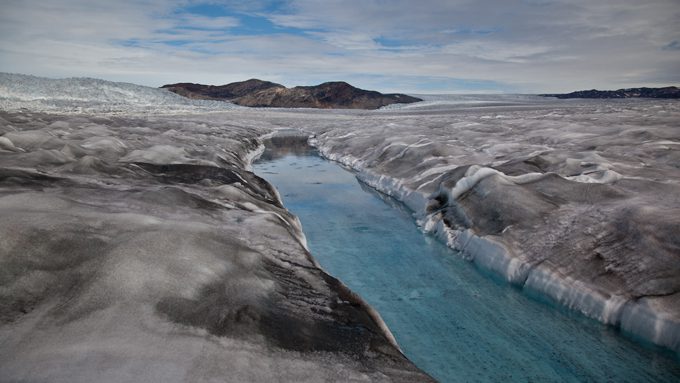Heavy fuel oil is considered the most significant threat to the Arctic. So why isn’t it banned yet?
Blog
Black carbon: Bringing the heat to the Arctic
The Crystal Serenity, the first luxury cruise ship to sail the Northwest Passage, arrived safely in New York City last Friday. On her 32-day voyage, we estimate that the Crystal Serenity consumed about 3300 metric tons of fuel, emitting more than 10,000 metric tons of carbon dioxide and a bit more than 1 metric ton of black carbon.
That last number may not sound like much. It is. Depending on time and location of emission, black carbon can be about 3200 times more powerful a climate forcer than CO2 over a 20-year time horizon, making that single ton of black carbon equivalent to the Crystal Serenity emitting more than an additional 3200 metric tons of CO2 during the voyage.
Black carbon from shipping has a unique impact on the Arctic environment. Much like black asphalt on a sunny day, black carbon particles soak up sunrays, heating their surroundings, whether in the atmosphere or on the ground. When these small, dark particles settle on the surface of light-colored snow and ice, they accelerate its melting.

Black carbon emitted from ships can settle on ice and snow, darkening the surface and increasing the rate of melting. (Photo: ©Henrik Egede Lassen/Alpha Film, from the Snow, Water, Ice, and Permafrost in the Arctic report from the U.N. Arctic Monitoring and Assessment Programme.)
Although the Crystal Serenity is the first ship of its kind to traverse the Northwest Passage, its voyage is a sign that the Arctic is increasingly open for business, not only for cruise ships but also for larger tanker vessels and other cargo ships. All of these vessels will emit black carbon close to the already diminishing snow and ice of the Arctic, an area warming at twice the rate of the rest of the globe.
Based on data from the IPCC, the ICCT estimates that in 2010, marine black carbon emissions represented up to 13% of diesel black carbon emissions. And that share is expected to rise: Danish researchers anticipate Arctic shipping activity to increase more than 50% between 2012 and 2050. Without policies put into place to reduce black carbon emissions, this increase may result in up to 120% more CO2 and black carbon emissions over the same period.
The good news is that black carbon, like other short-lived climate forcers, leaves the atmosphere after only a few days or weeks. So actively reducing black carbon emissions now immediately results in lower overall black carbon levels in the atmosphere. And we already know how to reduce black carbon emissions from marine vessels.
Earlier this month, the ICCT hosted a third and final workshop in a series on marine black carbon emissions at Environment and Climate Change Canada’s offices in Vancouver, British Columbia. (For materials from the first two, see here and here.) This workshop, funded by the Climate and Clean Air Coalition, focused on solidifying approaches for measuring black carbon emissions from ships and determining effective technological, operational, and policy strategies to control those emissions. Workshop participants, many of whom are international experts on black carbon, identified a number of already existing ways to control black carbon from ocean-going vessels. Reducing vessel speeds, selective catalytic reduction, diesel particulate filters, and using cleaner fuels like LNG can all effectively reduce black carbon emissions from ships. However, it’s still up to the International Maritime Organization to set a standard for black carbon emissions that would require the international shipping fleet to adopt any of these methods.
That’s what’s happening at meetings of the IMO’s Subcommittee on Pollution Prevention and Response (PPR). These weeklong meetings, however, are held once a year with only a few hours devoted to black carbon. In 2011, PPR was tasked by IMO’s Marine Environment Protection Committee to figure out how to define, measure, and control black carbon emissions from ships. After four years, PPR agreed on a definition of black carbon, a definition promoted at ICCT’s first workshop on marine black carbon. The science presented at ICCT’s second and third black carbon workshops is moving us closer to a common approach for measuring marine black carbon. And the technical, operational, and policy strategies presented at the third workshop can inform IMO member state submissions to PPR on ways to reduce black carbon emissions and mitigate its impact on the Arctic. Hopefully, it won’t take PPR another four years to recommend policies that directly control black carbon emissions. The Arctic may not be able to wait for much longer.
